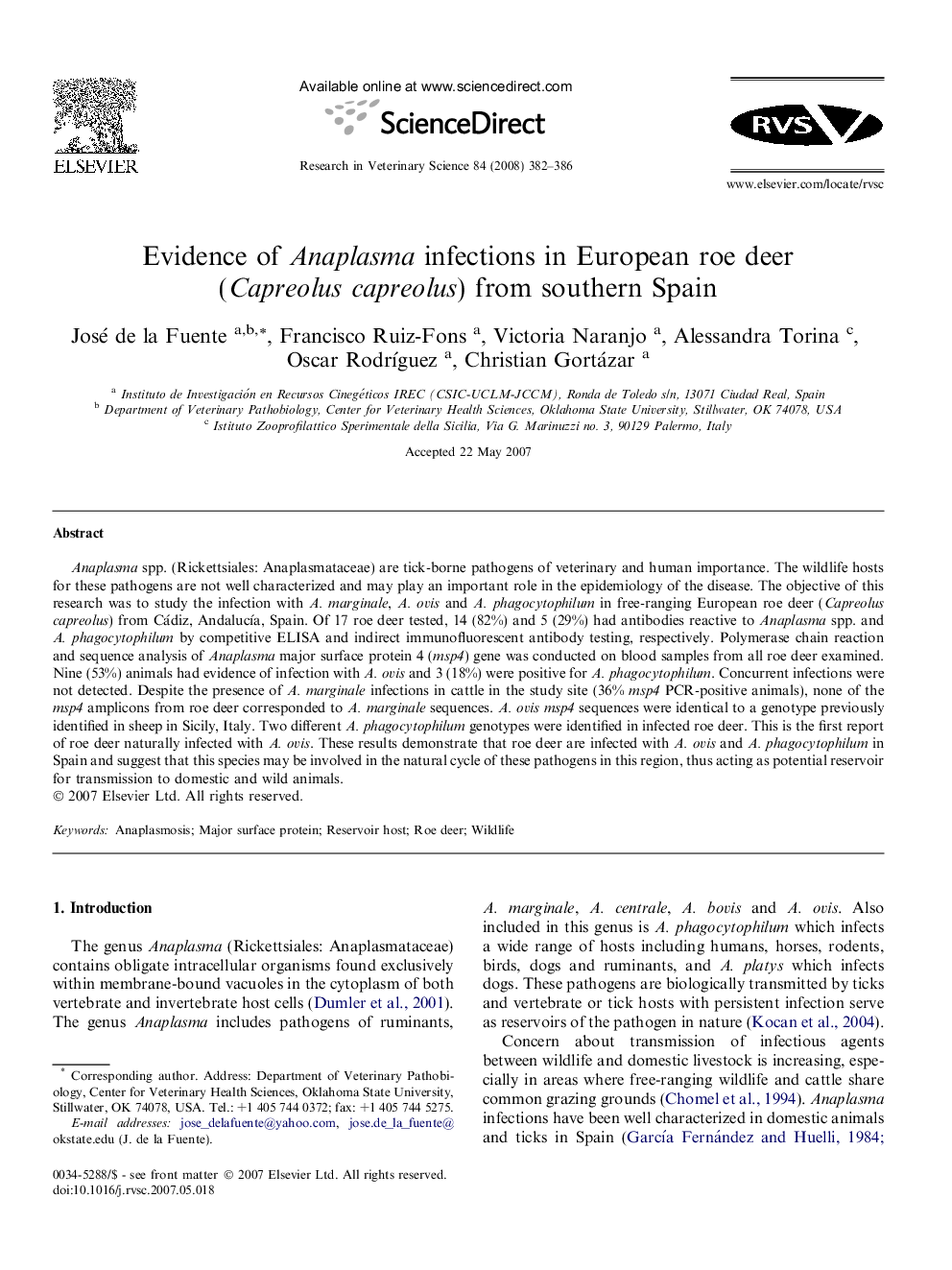| Article ID | Journal | Published Year | Pages | File Type |
|---|---|---|---|---|
| 2456253 | Research in Veterinary Science | 2008 | 5 Pages |
Anaplasma spp. (Rickettsiales: Anaplasmataceae) are tick-borne pathogens of veterinary and human importance. The wildlife hosts for these pathogens are not well characterized and may play an important role in the epidemiology of the disease. The objective of this research was to study the infection with A. marginale, A. ovis and A. phagocytophilum in free-ranging European roe deer (Capreolus capreolus) from Cádiz, Andalucía, Spain. Of 17 roe deer tested, 14 (82%) and 5 (29%) had antibodies reactive to Anaplasma spp. and A. phagocytophilum by competitive ELISA and indirect immunofluorescent antibody testing, respectively. Polymerase chain reaction and sequence analysis of Anaplasma major surface protein 4 (msp4) gene was conducted on blood samples from all roe deer examined. Nine (53%) animals had evidence of infection with A. ovis and 3 (18%) were positive for A. phagocytophilum. Concurrent infections were not detected. Despite the presence of A. marginale infections in cattle in the study site (36% msp4 PCR-positive animals), none of the msp4 amplicons from roe deer corresponded to A. marginale sequences. A. ovis msp4 sequences were identical to a genotype previously identified in sheep in Sicily, Italy. Two different A. phagocytophilum genotypes were identified in infected roe deer. This is the first report of roe deer naturally infected with A. ovis. These results demonstrate that roe deer are infected with A. ovis and A. phagocytophilum in Spain and suggest that this species may be involved in the natural cycle of these pathogens in this region, thus acting as potential reservoir for transmission to domestic and wild animals.
